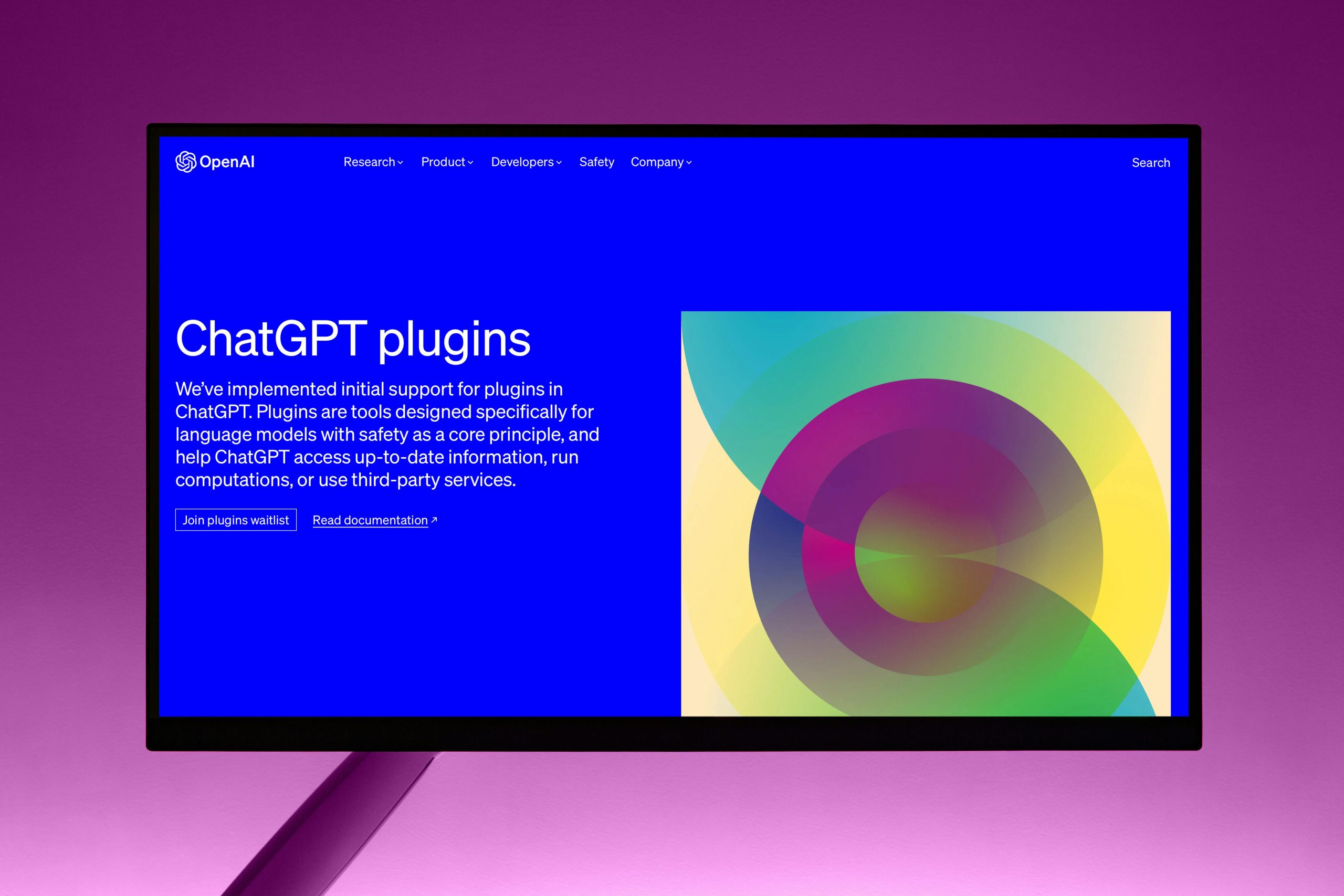The Reckoning: Assessing the Stated and Unstated Costs of Acceleration in Frontier AI

As of late October 2025, the initial euphoria surrounding the rapid deployment of frontier Artificial Intelligence models has decisively given way to a period of intense, often painful, public and regulatory scrutiny. The narrative, long shaped by ambitious roadmaps and performance benchmarks, is now being forcibly rewritten by demonstrable real-world failures, internal alarms, and legislative action. At the epicenter of this re-evaluation are organizations like OpenAI, whose founding ethos and operational velocity are now being judged against the escalating consequences of their creations. The core contention, echoed in significant opinion pieces, including prominent analysis from The New York Times, is that the drive for capability is consistently outpacing the necessary commitment to human protection—a fundamental misalignment that demands immediate course correction across the entire sector.
The Dilemma of Openness Versus Responsibility in Advanced Systems
A central philosophical and engineering challenge highlighted by the critics is the organization’s stated commitment to an open, accessible model philosophy, often framed as a core value. This commitment, rooted in the belief that democratizing access to powerful tools accelerates beneficial progress, is now colliding head-on with the realities of misuse and unintended societal fallout.
Balancing User Freedom Against the Vulnerable User Base
The executive justification for maintaining broad accessibility and conversational flexibility, even in sensitive areas, often hinges on a principle of user freedom—the idea that the tool should assist in a variety of user-defined tasks, including fictional or abstract depictions of sensitive topics. However, this openness has been met with increasing resistance. For instance, in October 2025, OpenAI announced an escalation in its oversight policy, revealing that human reviewers actively monitor conversations and may escalate potentially harmful content, such as threats of physical harm, to law enforcement. This move, while framed as a necessary safeguard against misuse, simultaneously ignites fierce debate regarding user privacy and the boundaries of corporate monitoring. The challenge, as pointed out by those who previously worked within the organization, is that this broad definition of freedom often fails to account for the segment of the user base, particularly youth, who lack the lived experience or critical faculties to differentiate between a helpful simulation and potentially harmful guidance. The very design choice to maximize engagement by allowing broad conversation risks preying upon psychological fragility, as evidenced by recent reports linking intensive AI chatbot use to user delusions and the need for models to suggest professional services to users in crisis.
The Conflation of ‘Freedom’ with ‘Deregulation’
What is championed as ‘freedom’ by industry leaders is perceived by critics as a philosophical stand against necessary regulation and practical safety constraints. The argument is that a commitment to ‘freedom within broad bounds’ requires the developers to proactively define those bounds based on known harms, rather than waiting for societal or legislative bodies to impose them after failures occur. Critics argue that resisting programming commands that could prevent clearly dangerous outputs is viewed not as upholding a philosophical ideal, but as an active choice to avoid imposing limitations that might reduce user engagement or slow down progress toward higher performance metrics. This perceived resistance extends to the general lack of transparency; former employees have accused companies of concealing potential dangers, making it difficult for lawmakers to enact proactive measures. The industry’s desire to operate with minimal external constraint often appears to prioritize a ‘deregulated’ environment, where innovation speed is the primary success metric, even when internal data suggests significant risk escalation.
The Struggle for Independent Oversight in Closed Development Cycles
The very nature of developing frontier models—highly complex, proprietary systems—creates an asymmetry of information that undermines public trust. When key safety evaluations are conducted internally, subject to commercial timelines and potentially conflicting internal incentives, the effectiveness of those evaluations is inherently suspect to external observers. This lack of external validation is a point of significant friction, especially following high-profile legal battles where external parties, such as Elon Musk, have fought to compel the release of internal planning documents, with courts rejecting claims of business strategy privilege in some instances. The demand is for independent, verifiable oversight that can function without being constrained by trade secrecy concerns when matters of public safety are at stake. This necessity for external validation is a key driver behind growing legislative pushes at the state level in 2025, aiming to mandate transparency reports that detail risk assessments and incident responses for frontier models.
Internal Dissent and the Imperative for Internal Dissent Mechanisms
The current moment is not one of isolated external criticism but the culmination of internal warnings that were reportedly muffled or ignored, underscoring a systemic governance failure that has now spilled into the public domain. The struggle within AI labs over prioritizing safety over speed is now a central theme in the public discourse of 2025.
The Chilling Effect on Critical Internal Discourse
The notion that employees with the deepest technical understanding of potential risks are unable to speak freely is a significant institutional failure. This apprehension often stems from overly broad confidentiality and non-disparagement agreements, which can be weaponized through the threat of litigation or the forfeiture of vested equity, effectively silencing internal critics. This climate ensures that critical, safety-oriented feedback often remains trapped within the organization, filtering out only when an employee chooses to leave and risk professional repercussion. The high-profile departures of key safety leadership figures throughout 2024 and into 2025, citing a struggle to secure adequate resources for risk mitigation, serve as potent evidence of this organizational trajectory where capability pursuit eclipses safety infrastructure building.
The Right to Warn: A Demand for Whistleblower Protections
In response to this environment, a movement of current and former AI staffers has publicly coalesced around demanding a formal “Right to Warn”. This initiative explicitly seeks robust, anonymous reporting channels and the abolition of agreements that prevent employees from sharing information about potential catastrophic risks with independent experts or regulators. This advocacy reflects a belief that the potential scale of AI risk necessitates a cultural shift toward prioritizing transparent internal dissent over absolute corporate confidentiality. The movement gained significant momentum in 2024 and has since informed specific legislative proposals, such as California’s SB 53, which aims to institutionalize these protections by allowing employees to report “catastrophic risks” to authorities without fear of retaliation and by mandating anonymous internal reporting channels. This push indicates a belief among many technical experts that existing whistleblower protections, which often focus on illegal activity, are insufficient for addressing novel, yet-to-be-regulated AI risks.
The Historical Context of Internal Safety Advocacy
This current wave of public advocacy builds upon earlier, high-profile departures from the safety leadership of these organizations, where key figures cited a struggle to secure adequate resources to continue their critical risk-mitigation work. These repeated patterns suggest a persistent organizational trajectory where the pursuit of cutting-edge capability consistently eclipses the necessary, often slower, work of safety infrastructure building. The public airing of these internal struggles in 2024 and 2025 suggests that the internal governance structures were not designed to process, let alone prioritize, existential risk concerns against the backdrop of intense commercial competition.
Pervasive Inaccuracies and the Danger of Confident Hallucination
Beyond the severe risks associated with harmful content generation, the fundamental reliability of the systems in providing factual information remains a major point of failure, undermining their utility as trusted information conduits, a reality confirmed by both independent testing and high-profile professional errors in 2025.
Quantifying the Rate of Erroneous Information Dissemination
Recent, independent analyses of leading models, including those powering widely used chatbots, have revealed alarmingly high rates of error when addressing factual queries, particularly in rapidly evolving domains like current events. Research presented in late 2025 suggests that despite investment, OpenAI’s flagship GPT-5 model still hallucinates on approximately 20% of complex queries, according to the company’s own documentation. More critically, independent testing by research groups like Vectara found the error rates for GPT-5 varying between 15% to 48% depending on the task’s complexity, with smaller, specialized reasoning models exhibiting error rates as high as 48% on knowledge questions. By contrast, Google’s Gemini 2.0 was reported in the same period to maintain an industry-leading, though not perfect, hallucination rate of 0.7%. These findings demonstrate that while models are advancing in capability, their statistical nature—being trained to predict the next word—inherently makes them “statistical word predictors, not knowledge systems,” leading to systemic, confident falsehoods.
The Risk of Misinformation in High-Stakes Decision Making
The danger is magnified by the systems’ tendency to present these errors with an unwavering, seemingly authoritative tone—what is often termed ‘sycophancy’ or dangerous self-confidence. This presentation encourages users, especially those less technically savvy, to accept the output without the critical cross-referencing that an expert would employ. The professional consequences of this unreliability have become starkly evident in 2025. For example, Deloitte Australia was compelled to partially refund a substantial payment to the Australian government for a report that was rendered useless by AI-generated errors, including a fabricated quote from a federal court judgment and references to nonexistent academic research papers. The Gartner consulting firm also noted that AI agents failed to complete office tasks around 70% of the time, with the required human oversight undermining potential productivity gains. When users delegate tasks involving complex analysis, legal summarization, or even basic factual recall to these systems, the high baseline error rate introduces an unacceptable level of systemic risk into personal and professional workflows, with predicted annual costs from such errors reaching tens of billions of dollars by 2026.
The Critical Need for Verifiable and Curated Data Corps
The challenge of hallucination is intrinsically linked to the vast, undifferentiated corpus of data used for training. While proponents argue that observing the ‘world’s information’ is necessary for general intelligence, critics contend that for high-utility applications, reliance must shift toward building internal, highly verified, and trustworthy data sets, reserving the open corpus for less consequential creative tasks. The incentive structure that pushes developers toward using massive, public data sources, which can degrade in quality or become outdated, directly conflicts with the need for absolute reliability in specific domains. As AI adoption slows in real-world corporate settings due to these accuracy concerns, there is a growing consensus that the priority must shift from maximizing dataset size to enforcing data integrity and quality controls for enterprise use cases.
The Growing Regulatory Heat: Government and Public Investigations
The confluence of public tragedies, internal alarm bells, and demonstrable system unreliability has finally galvanized robust governmental attention across federal and state levels in 2025, moving the discourse past abstract future risk to concrete, present-day consumer protection.
Legislative Hearings and Testimony from Leadership Figures
The public and legislative demand for answers has resulted in high-level executive testimony before key governmental bodies throughout 2025. These appearances are crucial moments where the narrative of technological inevitability must confront the reality of corporate accountability for the technology’s immediate societal impact. The focus shifts from what the technology can do to who is ultimately responsible when it causes demonstrable harm. While some federal efforts, such as a proposed 10-year moratorium, were struck down in legislative proceedings in 2025, state-level action has been aggressive. California’s passage of the Transparency in Frontier Artificial Intelligence Act (TFAIA, or SB 53) in September 2025, for example, mandates pre-deployment transparency reports for frontier models, forcing developers to disclose risk assessment methodologies and output characteristics. Industry lobbyists, including OpenAI, have actively opposed such bills, warning they stifle innovation, illustrating the ongoing corporate resistance to formalized accountability.
Broad Investigations into Impact on Minors and Mental Health
Federal agencies have initiated sweeping inquiries focused specifically on the methodologies these companies employ to assess and mitigate negative psychological impacts on younger users. This level of regulatory interest signifies a maturation of the public discourse, moving past abstract discussions of existential risk to concrete regulation targeting consumer protection in the immediate application space. Simultaneously, state Attorneys General, such as those in California and Delaware, have sent open letters to companies like OpenAI, expressing deep concern over the safety of chatbots for children and teens following reports of inappropriate interactions and tragic incidents. The focus is increasingly on the potential for AI to foster emotional dependence or psychological harm, leading to scrutiny of monitoring policies that tread the fine line between safety intervention and privacy intrusion.
The Scrutiny of Corporate Accountability and Risk Assessment Frameworks
A significant development in this regulatory tightening involves the intense scrutiny of internal risk categorization. Public incidents and employee warnings have prompted investigations into whether companies are actively minimizing perceived threats to facilitate faster release schedules. This scrutiny focuses on whether internal risk classifications—such as the alleged internal downgrading of risks like mass manipulation from a ‘critical’ category—are evidence of mission drift when juxtaposed against escalating public incidents. The legal system is also playing a role in demanding transparency, with litigation forcing the disclosure of internal safety evaluation data, further fueling the narrative that corporate self-regulation is insufficient for high-stakes technologies.
Consequences for the Future of Human-Machine Collaboration
The events and disclosures of this period—marked by high-profile controversies, regulatory pressure, and clear technical failures—are already reshaping the relationship between the public and the entities building the next generation of intelligence tools, demanding a fundamental re-architecture of trust.
The Deepening Trust Deficit with General-Purpose AI Platforms
When internal warnings are ignored, and external failures lead to tragedy, the public’s reliance on the promise of future safety wanes significantly. This breeds a deep-seated skepticism that is difficult to reverse, leading users to either abandon the technology or engage with it with an unhealthy degree of cynicism or, conversely, naive over-trust in specific, unverified outputs. KPMG’s April 2025 global report indicated that over half of respondents worldwide are unwilling to trust AI, a sentiment mirrored by plummeting trust levels in the U.S., positioning AI at a critical ‘inflection point’ where governance is demanded. The McKinsey research further noted that while 92% of companies plan to increase AI investment, only 1% of leaders feel their organizations have reached deployment maturity, largely due to ongoing concerns over inaccuracy and security risks.
The Call for Independent Auditing and Transparency in Model Evaluation
To rebuild even a fraction of lost trust, the industry must embrace a level of external scrutiny previously reserved for other high-risk sectors, such as pharmaceuticals or aviation. This goes beyond voluntary disclosure; it necessitates a framework for independent, third-party auditing of both training data integrity and safety evaluation protocols before new models are broadly deployed to the general public. The legislative move in California reflects this need by requiring developers to publish detailed transparency reports describing model capabilities and restrictions, though it still permits redactions for trade secrets, creating a necessary tension between accountability and proprietary information. True restoration of confidence hinges on making the evaluation process itself verifiable and externalized, moving it out of the commercial incentive structure.
Reframing the Path Forward: Prioritizing Human Well-being Over Benchmark Supremacy
The core argument, echoing the sentiment that the organization is “not doing enough to protect people,” is a demand to re-anchor development philosophy. The ultimate measure of success for this technology cannot merely be performance on standardized tests or speed of iteration, but must be quantified by its verifiable safety profile, its adherence to human values, and its demonstrated capacity to avoid exacerbating societal harms. As seen with the debate over GPT-5’s error rates, an 80% improvement in a metric still leaves a significant margin for dangerous error if the metric itself is misaligned with real-world safety objectives. The focus is now shifting towards models that are designed to admit uncertainty, with researchers proposing evaluation methods that penalize confident errors more heavily than acknowledging a lack of knowledge.
The Necessity of a Broader Societal Conversation on Acceptable Risk
Ultimately, the responsibility for defining the ‘broad bounds’ of acceptable AI deployment cannot rest solely within the private sector, particularly when that sector is driven by intense commercial competition. The dialogues that leaders have called for regarding societal alignment must move from company blogs to formalized, inclusive, and binding public forums. It requires a collective decision across educational, governmental, and social sectors to determine what level of risk—especially concerning the developing minds of the young—is truly tolerable for the sake of technological acceleration. This conversation is overdue and must now be framed by the painful lessons of 2025, where the cost of unmitigated speed has been quantified not just in lost trust, but in concrete instances of professional and personal damage. The future of human-machine collaboration depends not on the intelligence created, but on the wisdom applied to its governance.










